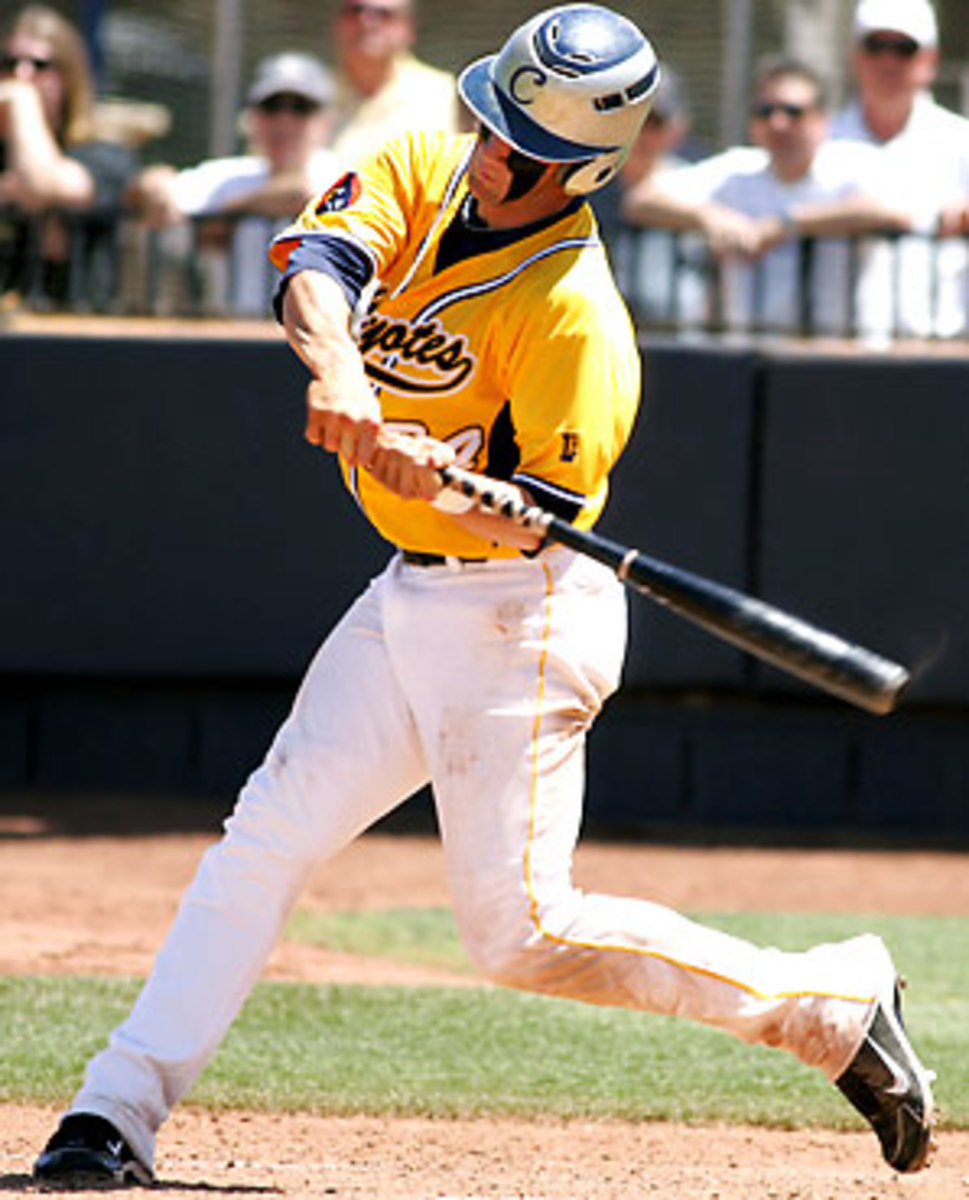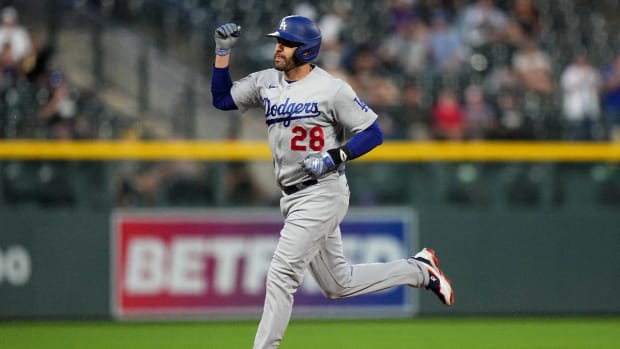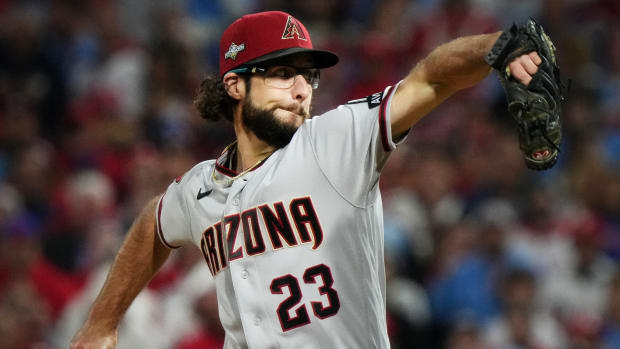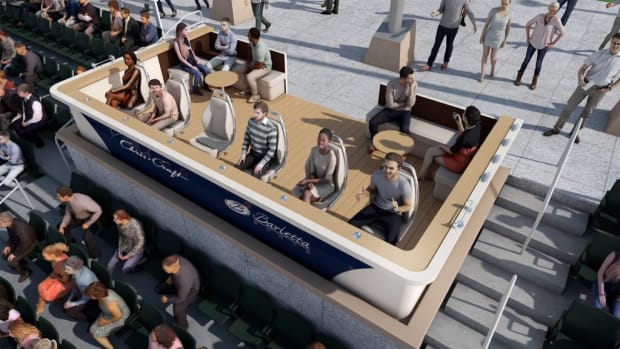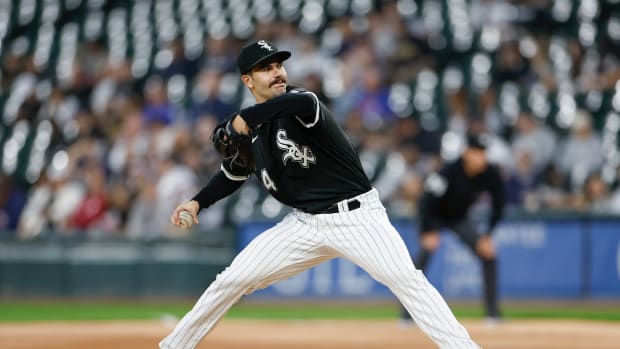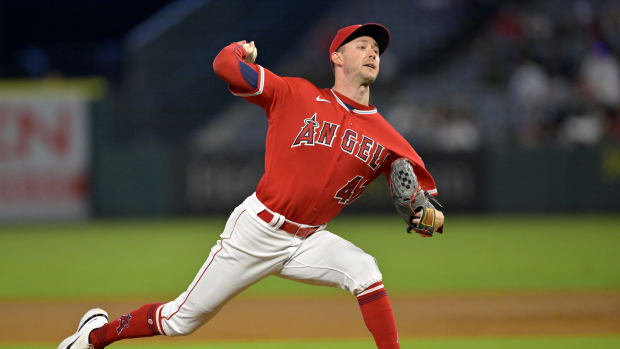Three ways to fix the MLB draft
Three strikes this week on how to upgrade the MLB Rule 4 First-Year Player Draft, the latest installment of which takes place June 7, and which might look very different come 2012 when a new Collective Bargaining Agreement is due to be in place:
The currency of the game these days is young, controllable players. A club's position in the draft is its opportunity to select among the best available such players. But are teams getting the full value of their currency if they are prohibited from exchanging it for something they regard as even more valuable?
For instance, consider the Pirates, who hold the second pick in the June 7 draft. The Nationals are going to take super-prospect and SI cover kid Bryce Harper with the first pick. But no other prospect after Harper is a clear-cut No. 2. Here is the report from one scouting director on this year's crop:
"It doesn't look like there's a lot of impact in this draft. Teams picking in the middle of the first round are in good shape. If baseball were like football, they'd be looking to trade down. They could get close to same player if they drafted lower.
"But I don't think there's much consensus among the top guys. There's a lot of varying opinions -- more than any draft I can remember. There are a bunch of really inconsistent performers. A lot of guys haven't performed; their tools haven't shown."
But what if a contender picking late in the first round wanted to trade up to pick a relief pitcher who might pitch this year down the stretch? Why not allow the Pirates to trade that pick to get a prospect and a later first-round pick?
The argument against trading draft picks basically goes something like this: Scott Boras.
Clubs fear empowering the uber-agent and the rest of his colleagues even more. How so? Say Harper, Boras' client, wants to play for the Yankees or Red Sox. Boras could "force" the Nationals to trade the pick by announcing Harper won't sign unless New York or Boston takes him.
Actually, a lesser version of this kind of manipulation already is occurring in the form of leaked signing bonus demands. And remember, teams don't have to trade picks. They can operate exactly as they do now -- and if they don't sign the pick, they get the same pick the next year, which is how the Nats wound up with Drew Storen and Stephen Strasburg in the same draft.
All trading picks would do is give clubs another option. And when is having more options a bad thing? The sharpest executives want as many options as possible. The ones who operate out of fear of making mistakes don't want added responsibility and second-guessing from their fans.
"The biggest problem with the draft is not what you think," Boras said.
What he means is that people use the money paid at the top of the draft, such as the $15.1 million given to Strasburg last year, as evidence that runaway expenses are killing the draft -- and they are wrong.
There are two problems with that theory. One, the top of the draft is where teams find stars, and paying them millions to gain six years of major league control is often a wise investment. Check out the best players from 2009:
• Eight of the top 11 OPS marks by drafted players were posted by players picked no lower than 14th overall (Joe Mauer, Prince Fielder, Derrek Lee, Adrian Gonzalez, Mark Teixeira, Ryan Braun and Alex Rodriguez).
• Seven of the top eight ERAs by drafted players were posted by players picked in the first round (Zack Greinke, Chris Carpenter, Tim Lincecum, Roy Halladay, Clayton Kershaw and Matt Cain).
Two, teams spend "only" about $6 million, on average, on their entire draft class each year -- or only about 3 percent of revenues of the average team. And yet the Royals don't blink about paying Jose Guillen twice that much annually.
And, Strasburg aside, it's not as if top signing bonuses have seen the same inflationary rates as free agency and arbitration. Of the 10 most lucrative signing packages in history (bonus plus guaranteed salaries), six of them were handed out at least nine years ago. The $9.5 million the Rangers gave Teixeira in 2001 is still a record for any position player -- at least until the Nationals sit down with Harper.
The problem, as Boras alluded to, occurs deeper in the draft. Clubs often overspend on prospects who don't profile as impact players. And big-market teams such as the Yankees and Red Sox have in recent years begun to treat the draft market as they did the free agent market before that grew so inefficient: They're using their resources to gain a competitive advantage. In the past four drafts New York and Boston have handed out bonuses between $500,000 and $2 million to 18 players taken in the third round or later -- in some cases much later.
The draft must remain true to its original mission statement: Get the best players to the worst teams. An NFL-style fixed slotting system or an NBA-style spending limit sound great, but baseball has to be especially careful that it doesn't chase off the multi-sport athlete for the sake of a rigid system. Maybe Austin Jackson, for instance, would be playing in the NBA today if the Yankees hadn't had the flexibility to wave $800,000 at an eighth-round pick to keep him from playing hoops at Georgia Tech.
The owners and players need to get together on a system that generally fixes costs, but at the same time allows room for extraordinary talents.
The draft is too long (50 rounds) and includes far too many high school players. Boras advocates holding two separate drafts: one for college players and one for high school players. He would limit the high school draft to two rounds, or about 70 picks if you add on compensation picks. Why just two rounds? His reason is based on years of data that show that after about 70 high school players are picked, the rest of them are glorified lottery tickets, many of whom will soon wash out of baseball and reenter the job market with no secondary education.
Perhaps those kids should be encouraged to attend college or (as no doubt Boras might prefer) cut their own deals as free agents with major league clubs, perhaps for the chance to play with an affiliate close to home or one that offers a better opportunity for advancement. Think of it as a high school grad applying to colleges, rather than one college choosing the high school grad.
A cap of 70 high school picks sounds a bit too harsh to me. I don't have Boras' enormous staff or resources. (I joke with him that his payroll exceeds those of some small-market franchises. Boras, who said he has negotiated $4 billion worth of player contracts in his career, said he makes no money on the First-Year Player Draft -- that he considers it "a loss leader" for his corporation.) So I checked one small sample, the 2000 draft, to consider what it means to be one of the hundreds of late-round picks out of high school.
In 2000, major league teams selected 436 high school players after the 13th round. Only nine of those kids signed a contract that year and eventually made it to the big leagues -- a 98 percent failure rate. After Round 26, teams selected 213 high school players, only one of whom, Victor Diaz, an outfielder who appeared in 147 games for the Mets and Rangers, played even a day in the big leagues -- a 99.5 percent failure rate.
What if you had stopped the high school picks at 70 in 2000? The quota would have been reached in the fourth round. In the 46 rounds that followed, teams took 535 high school players. Only 29 of them ever made it to The Show -- a failure rate after the fourth round of 95 percent.
Sure sounds like the system could use a full-scale review.






























